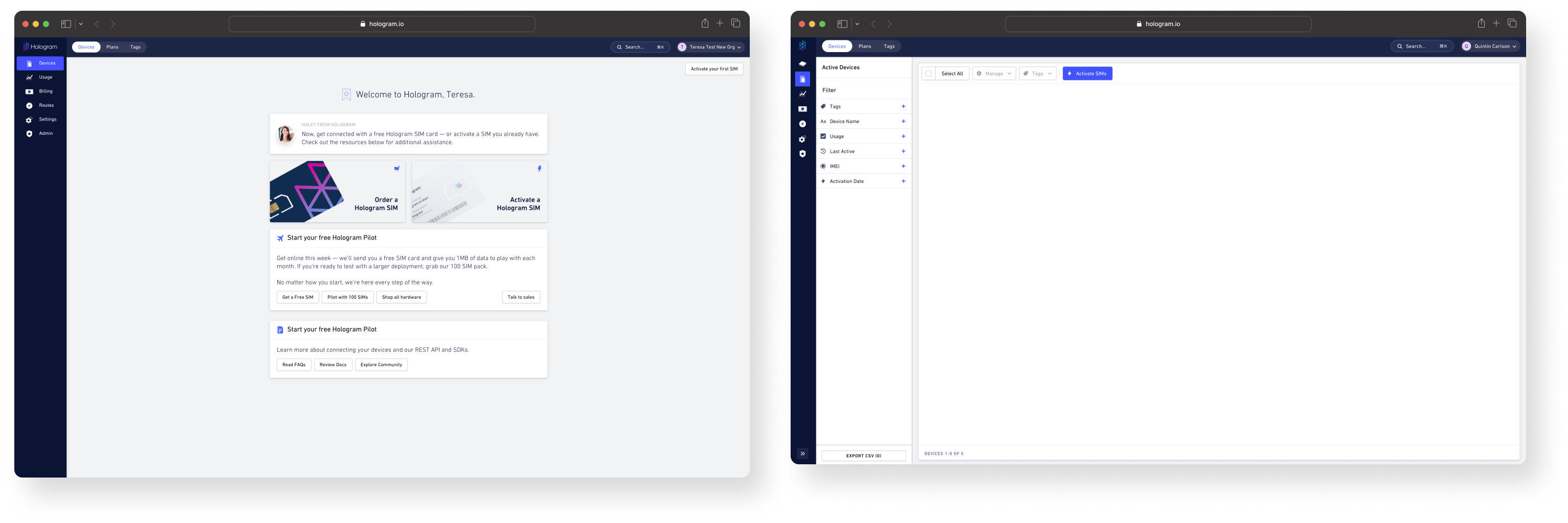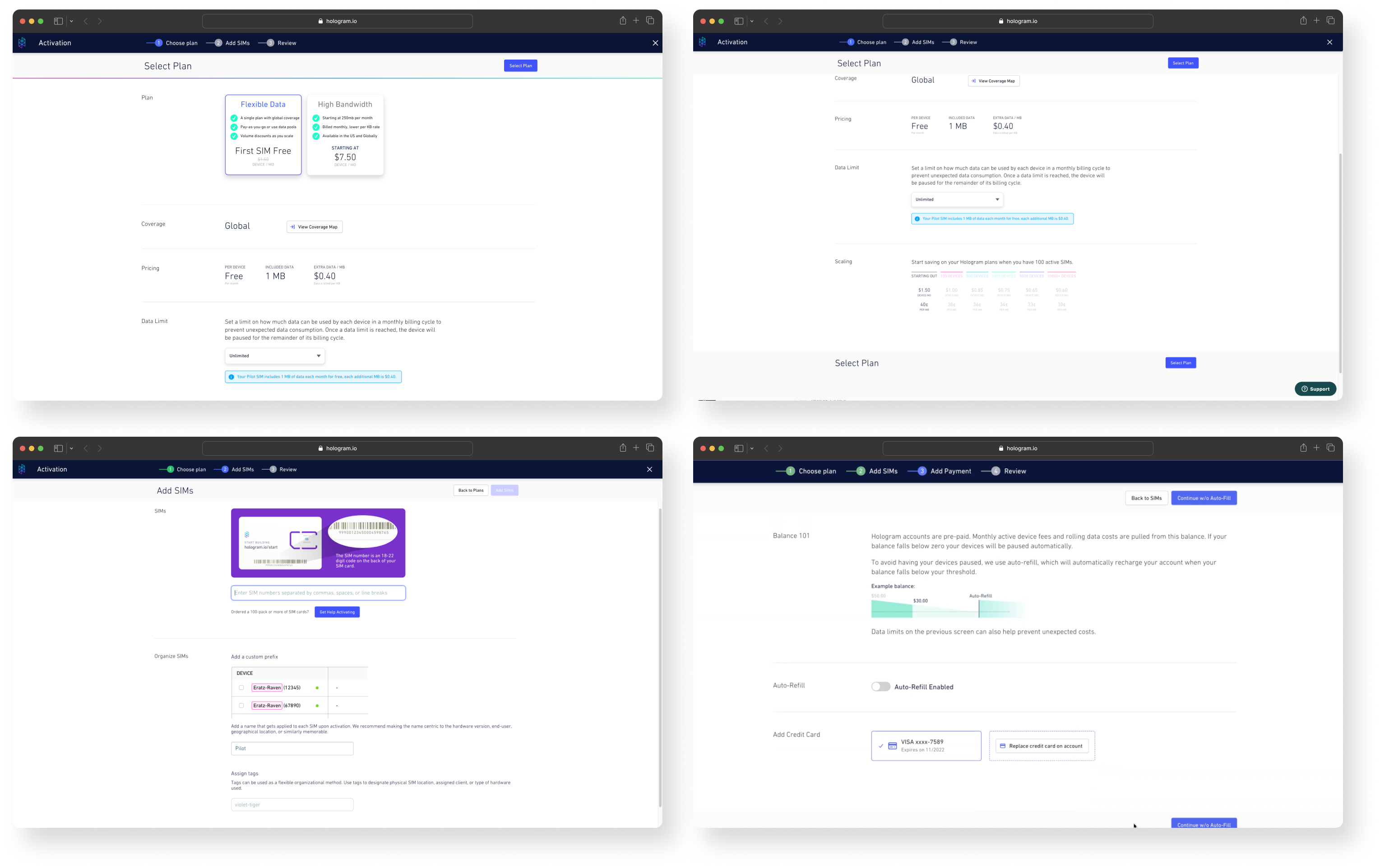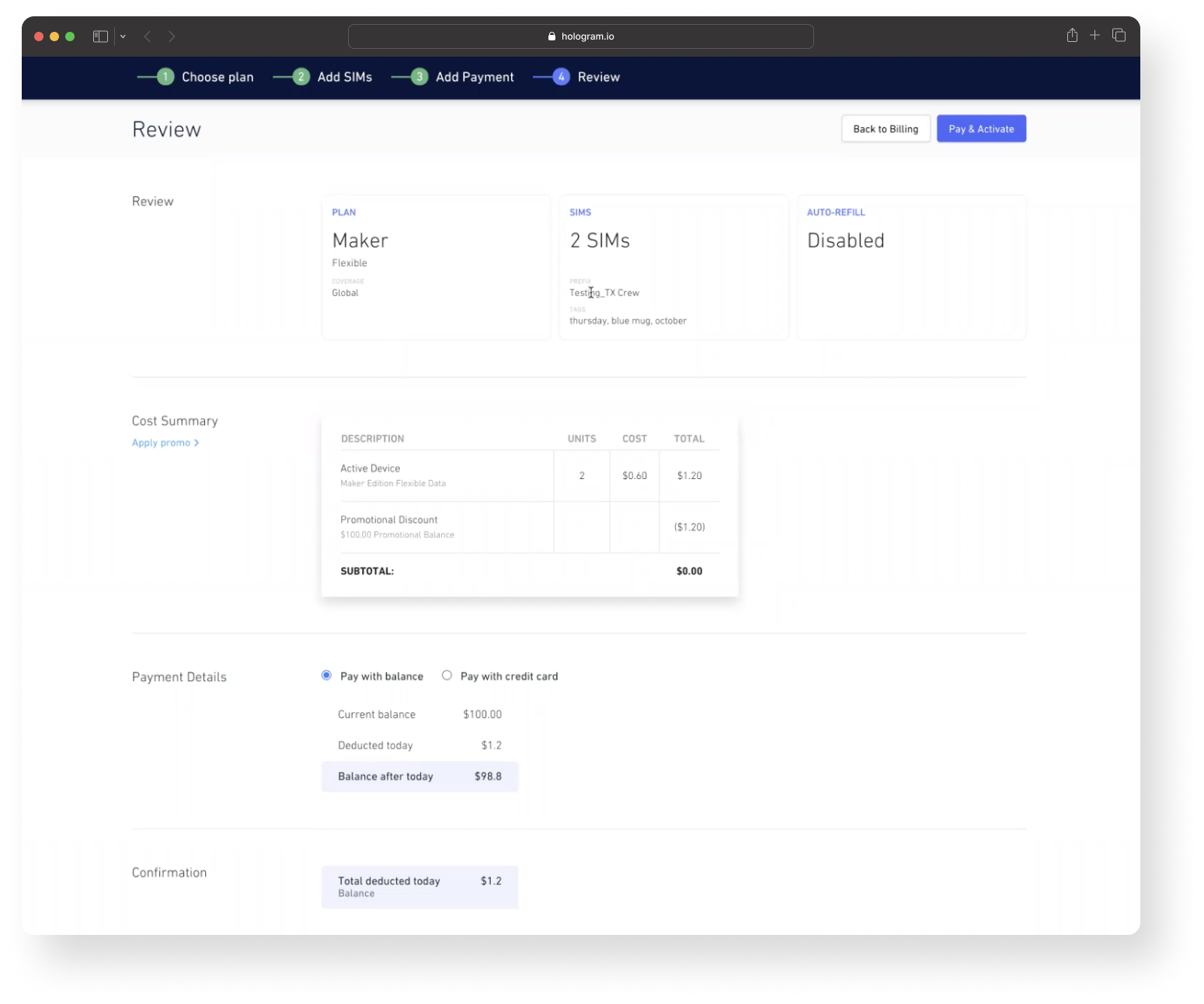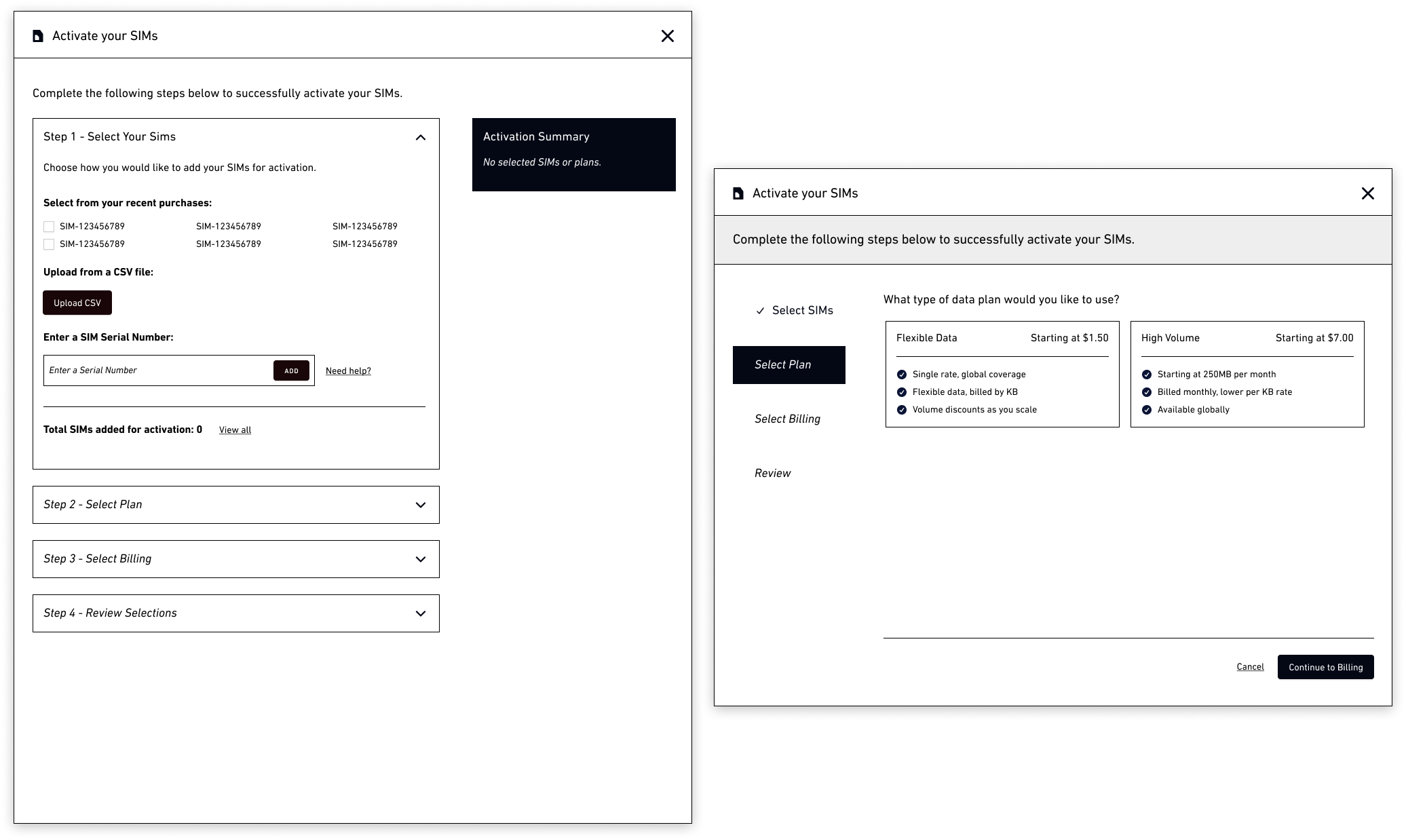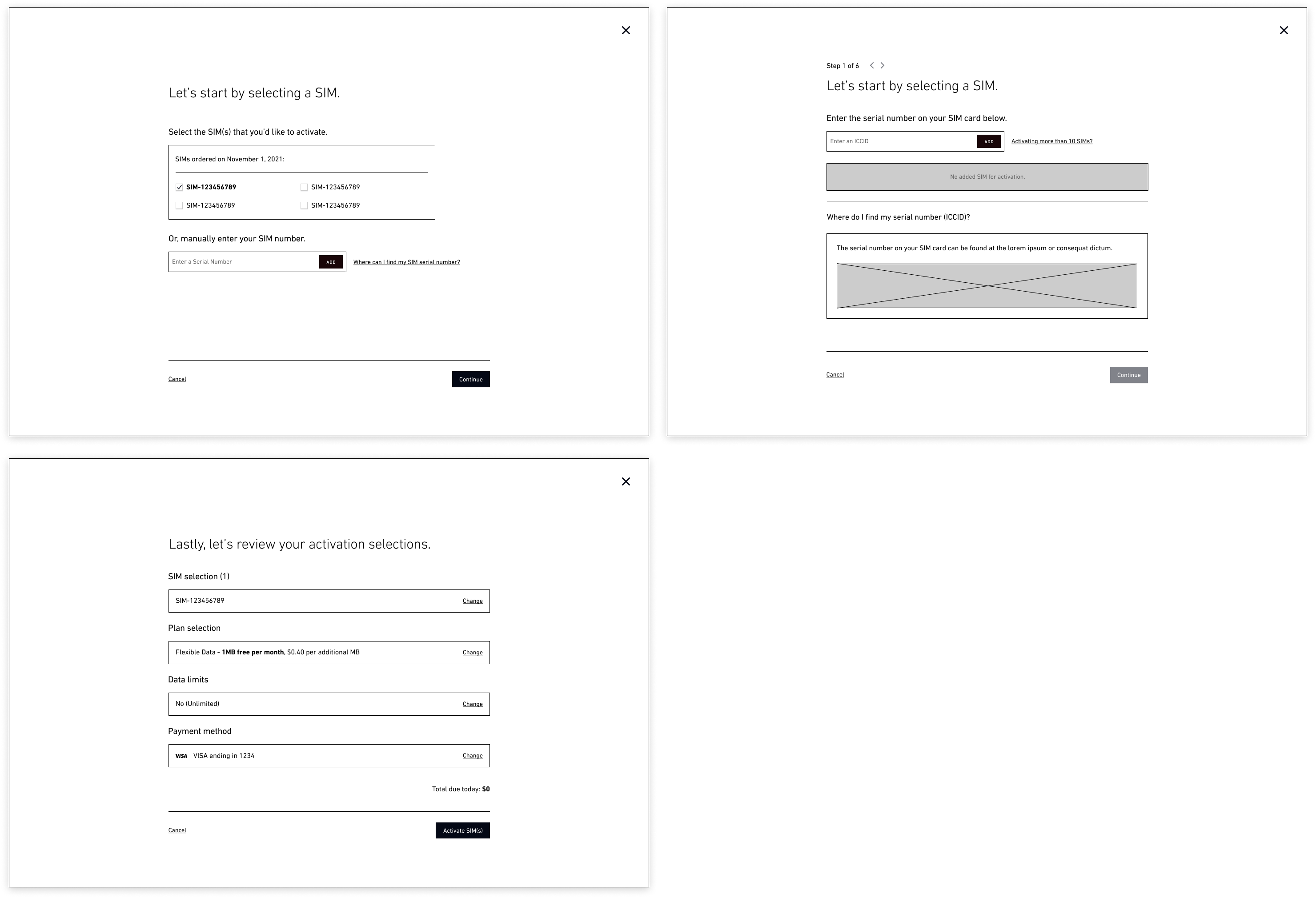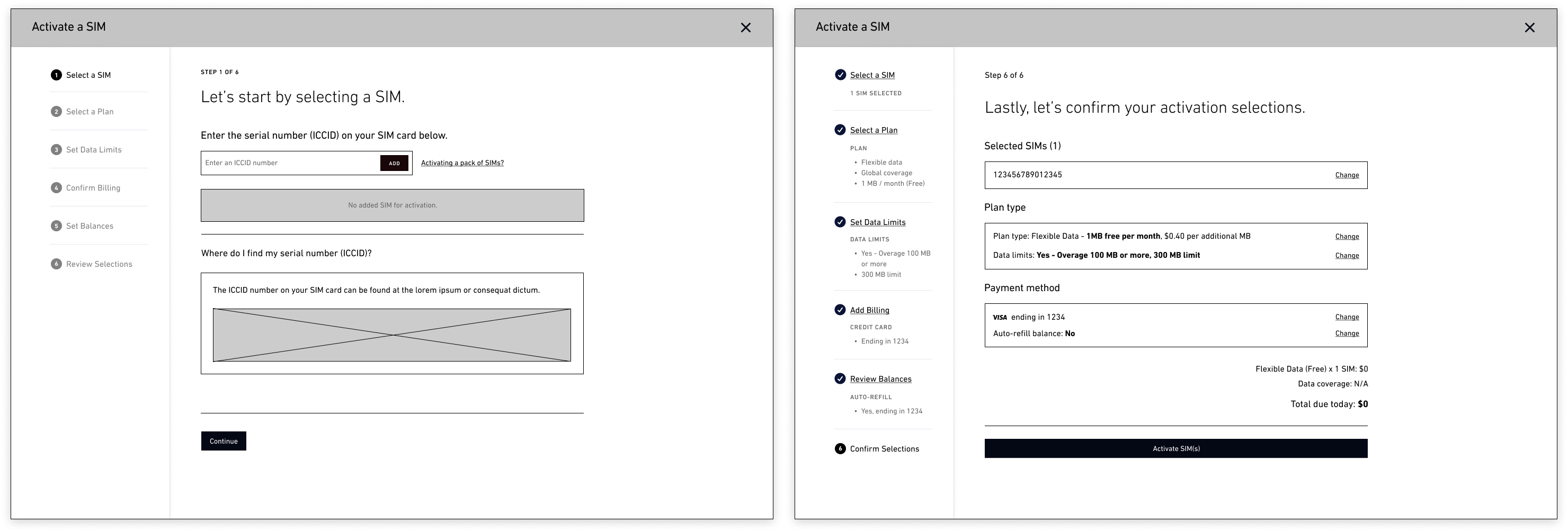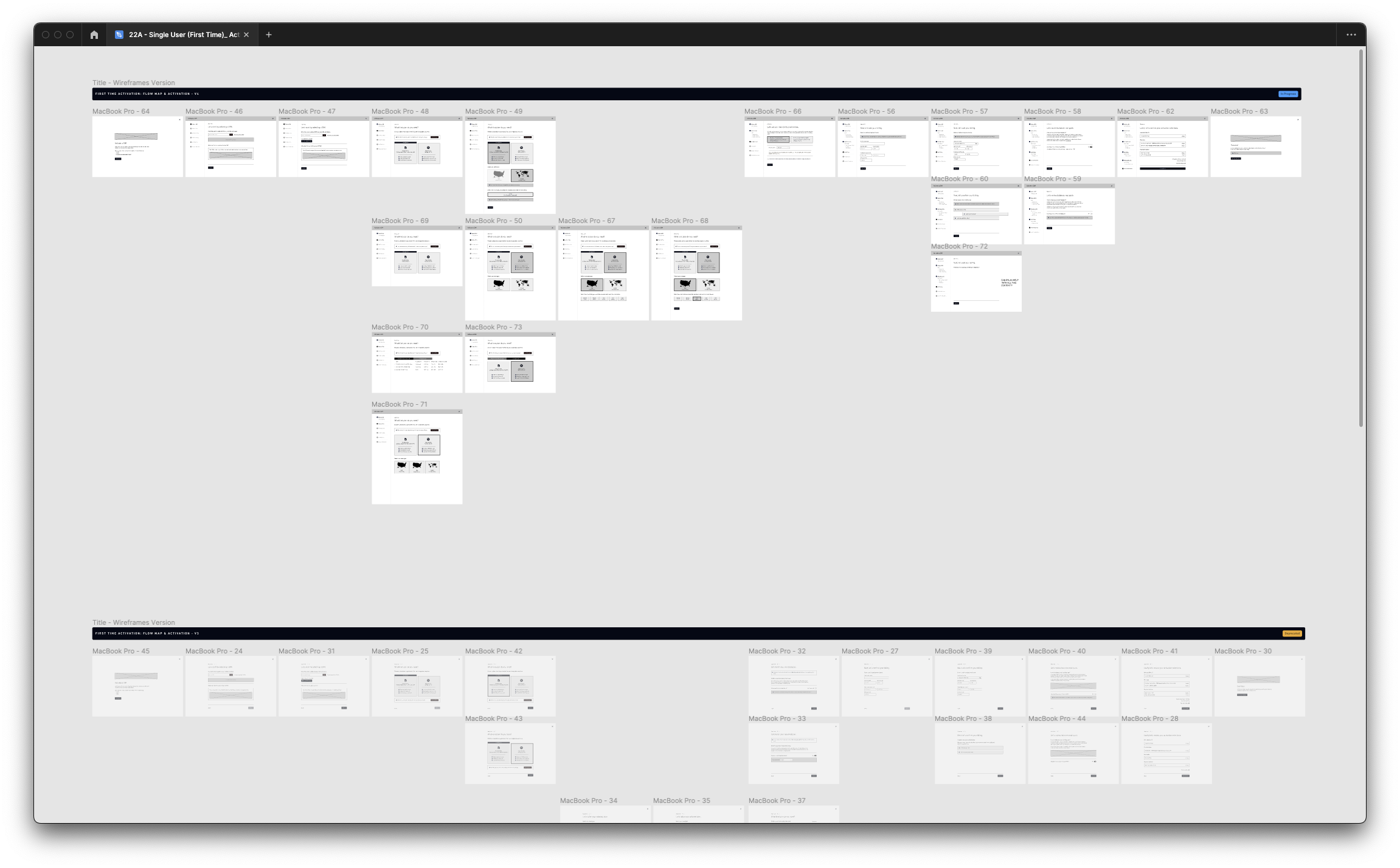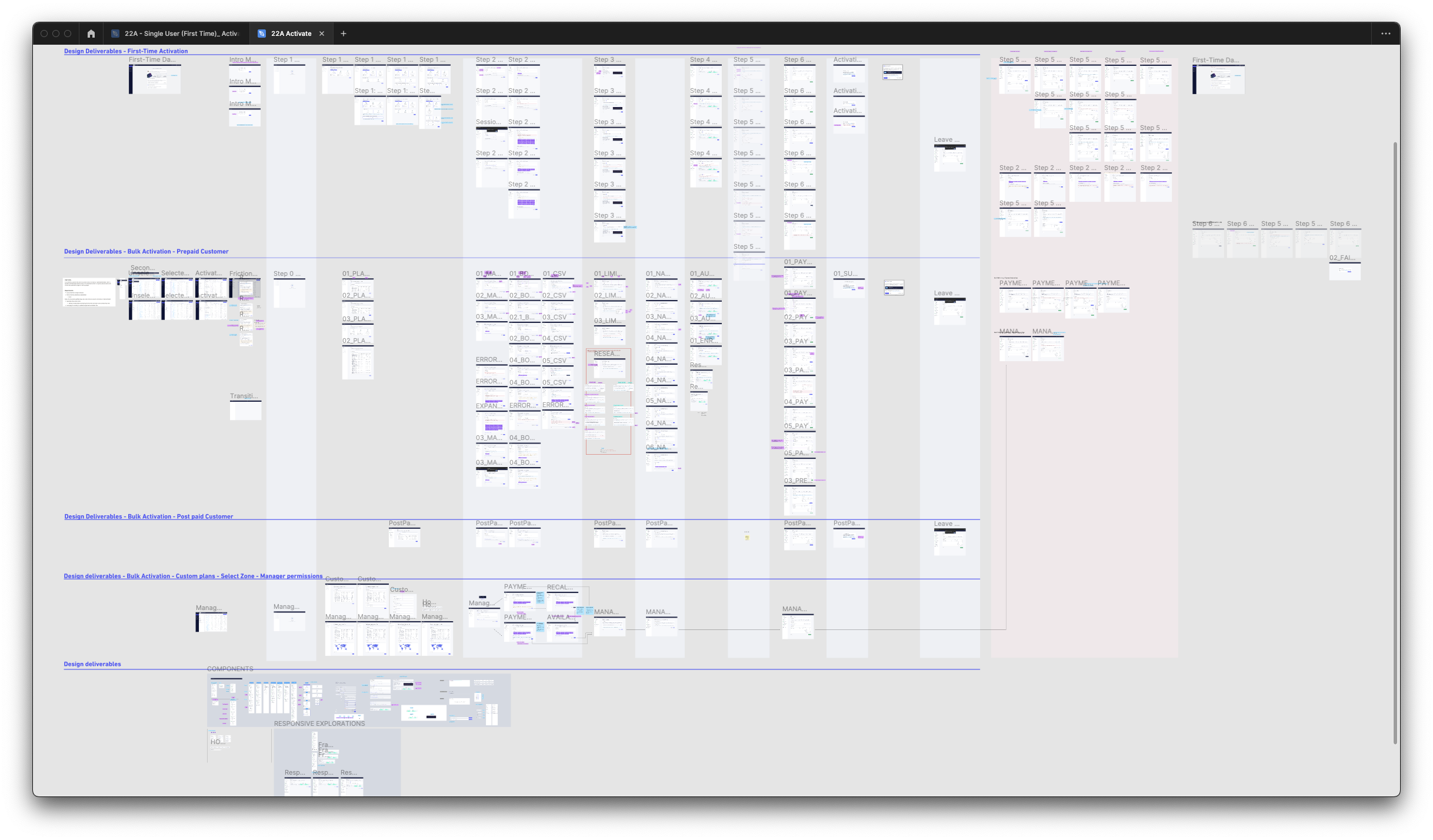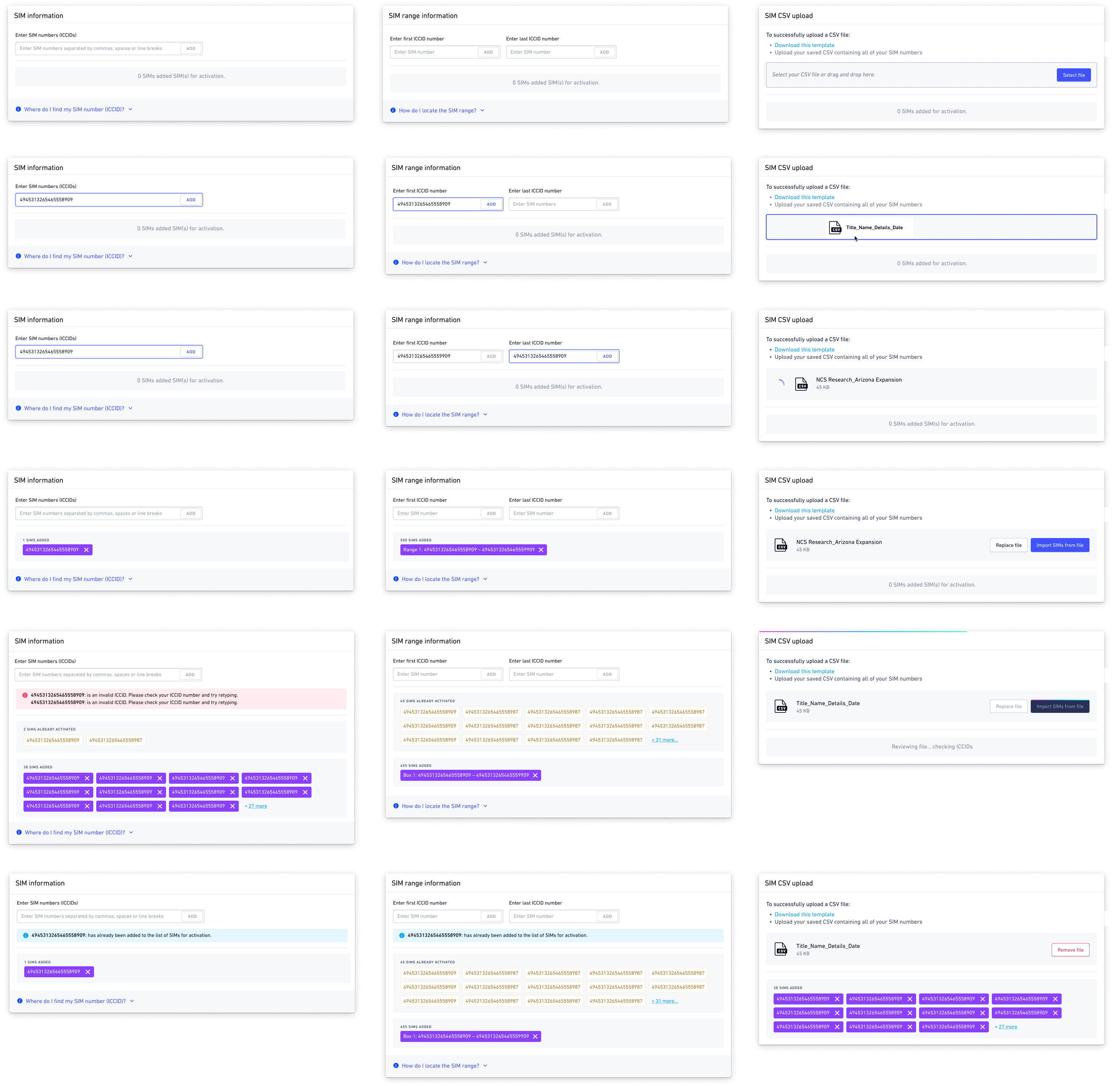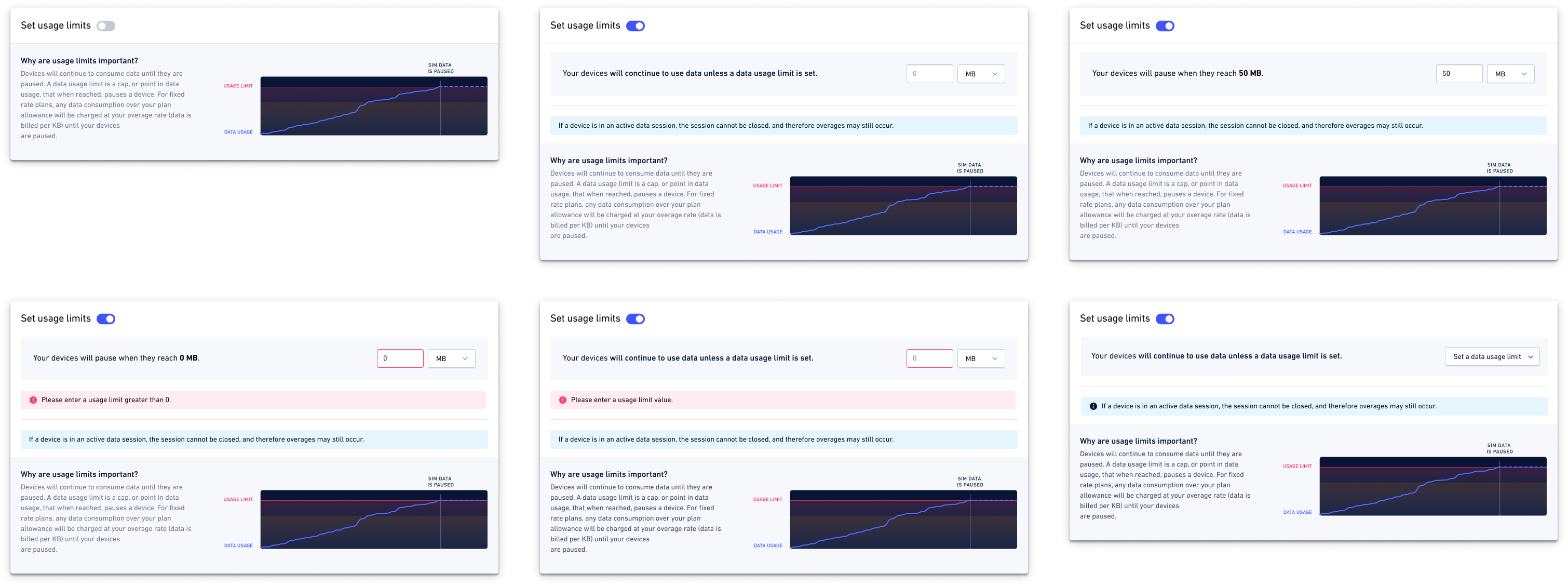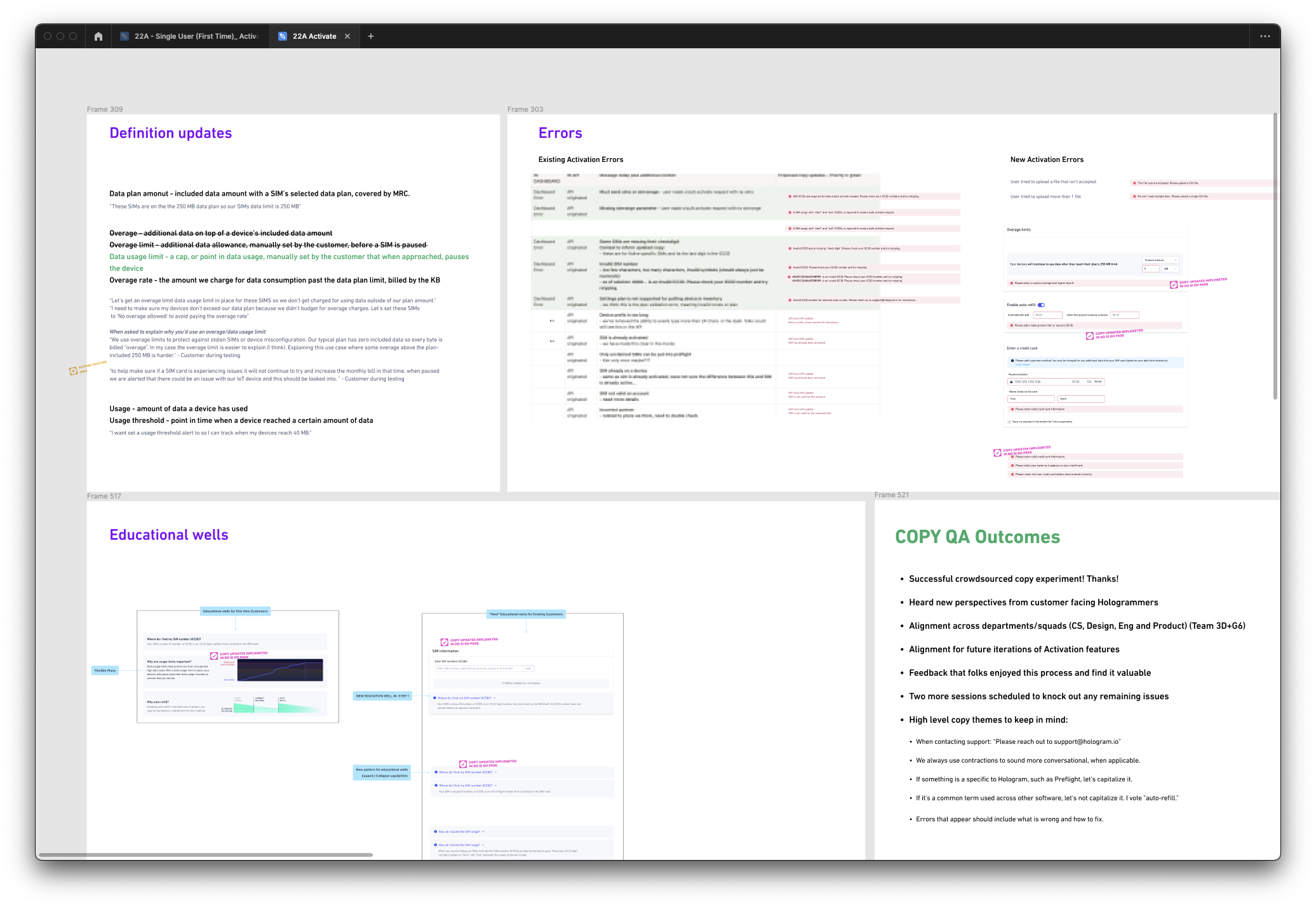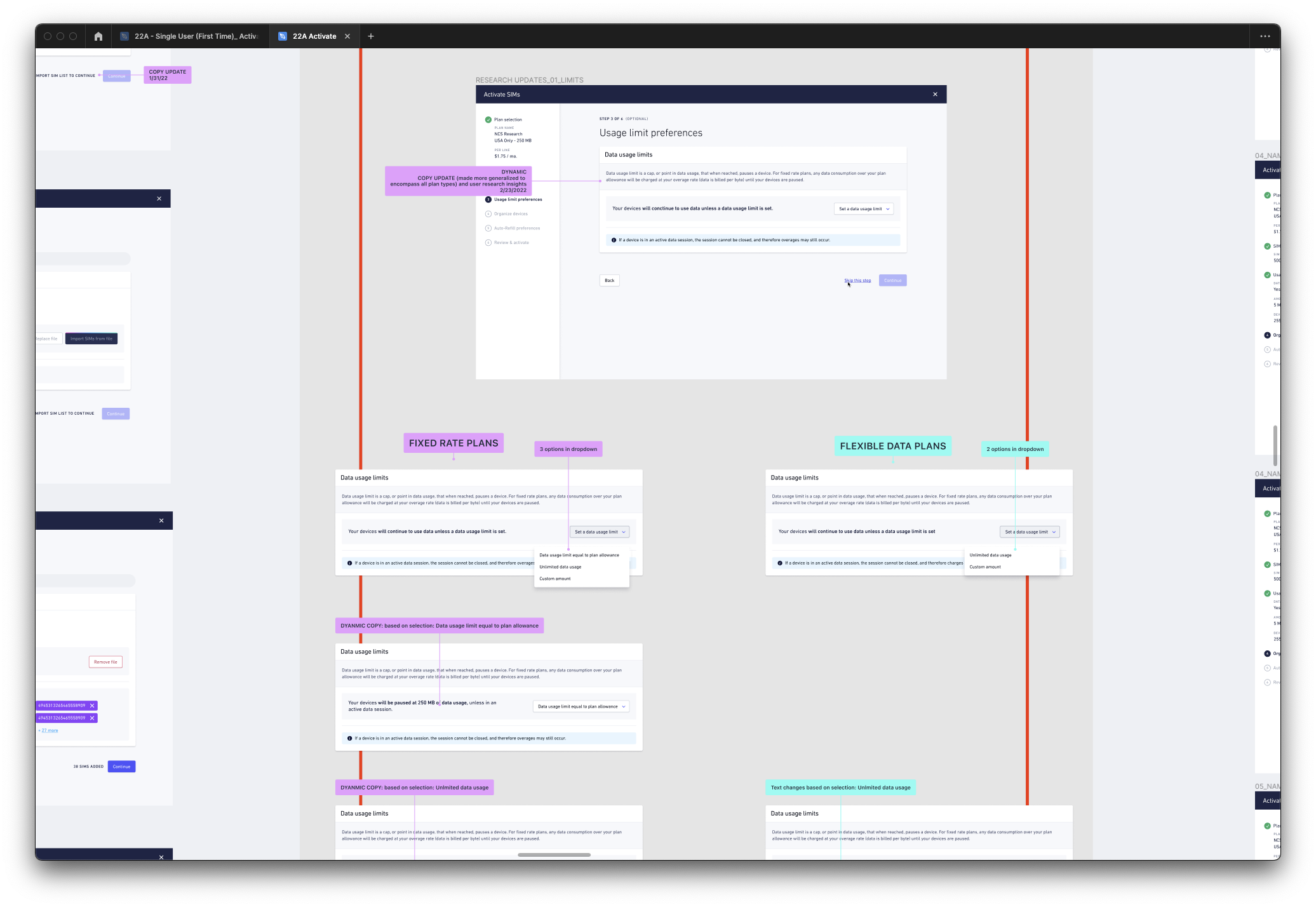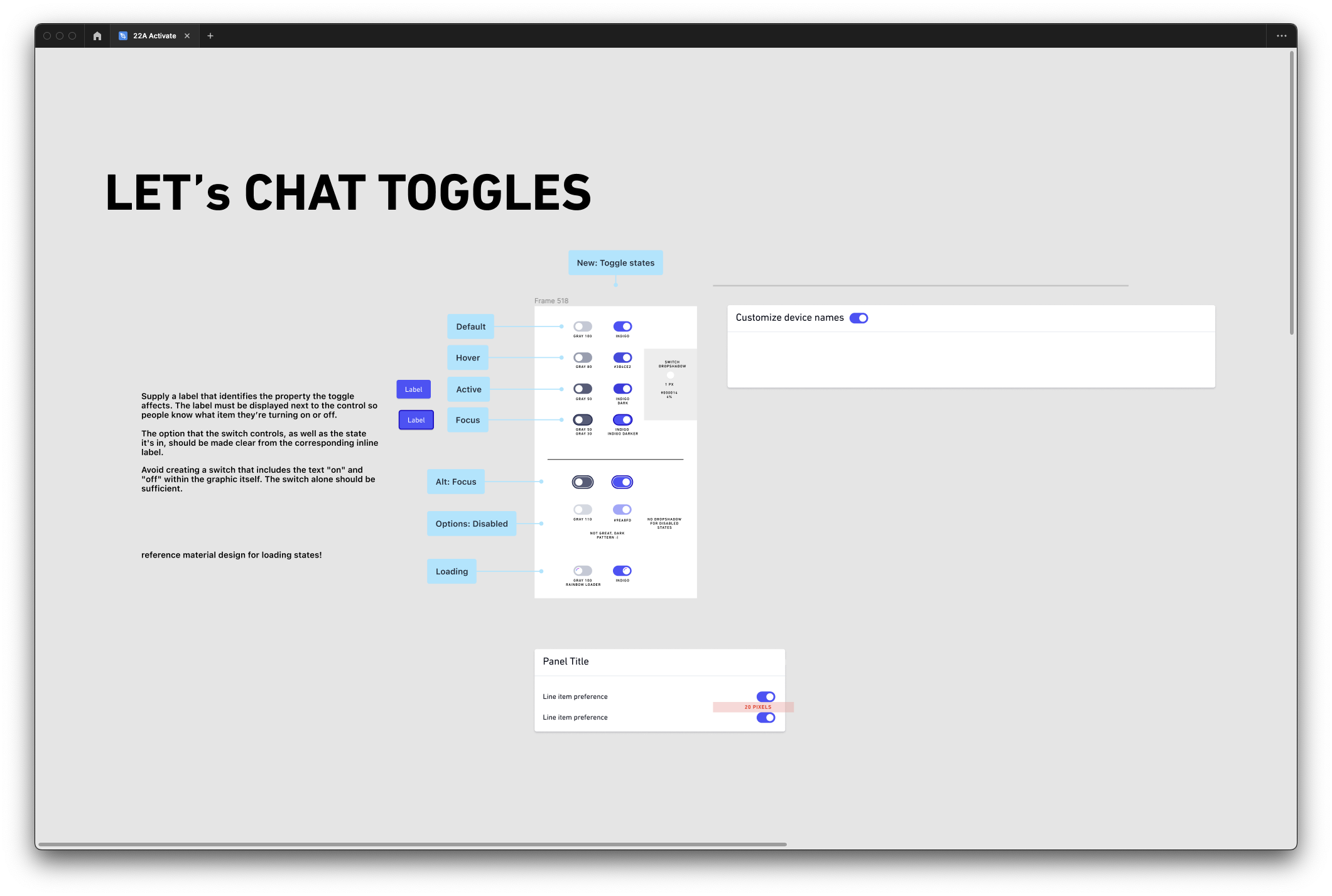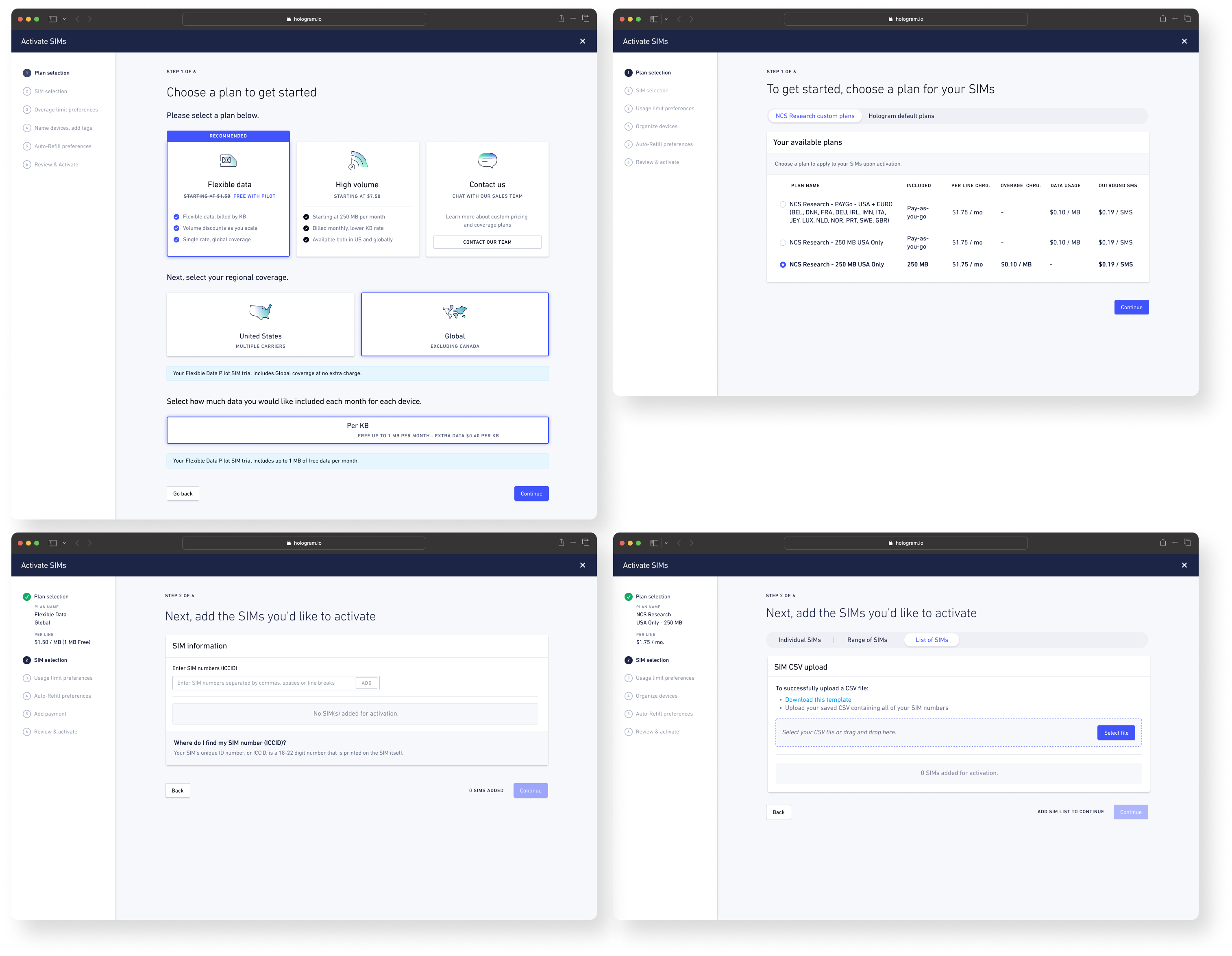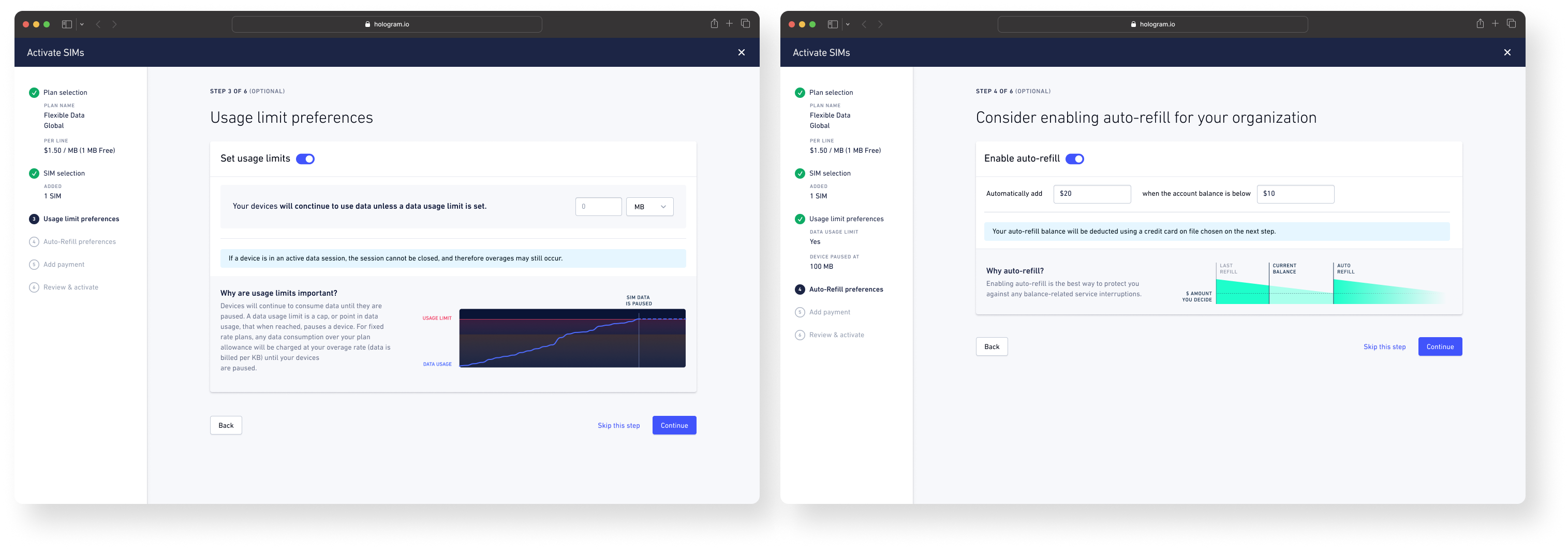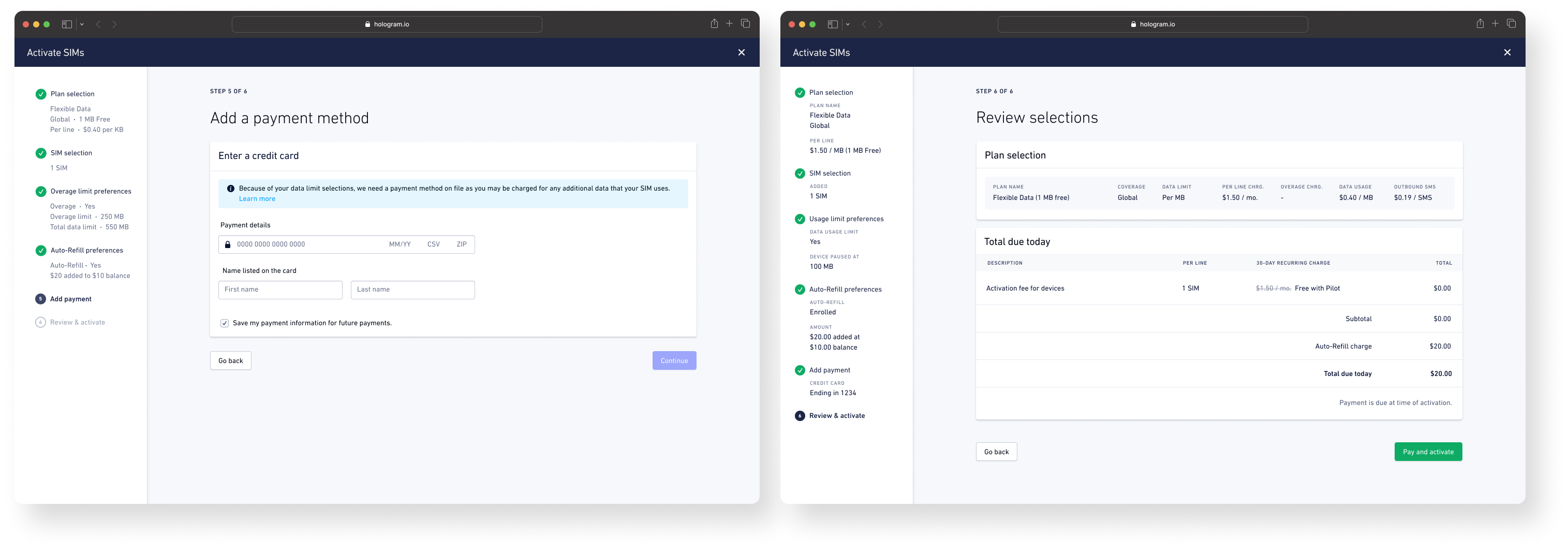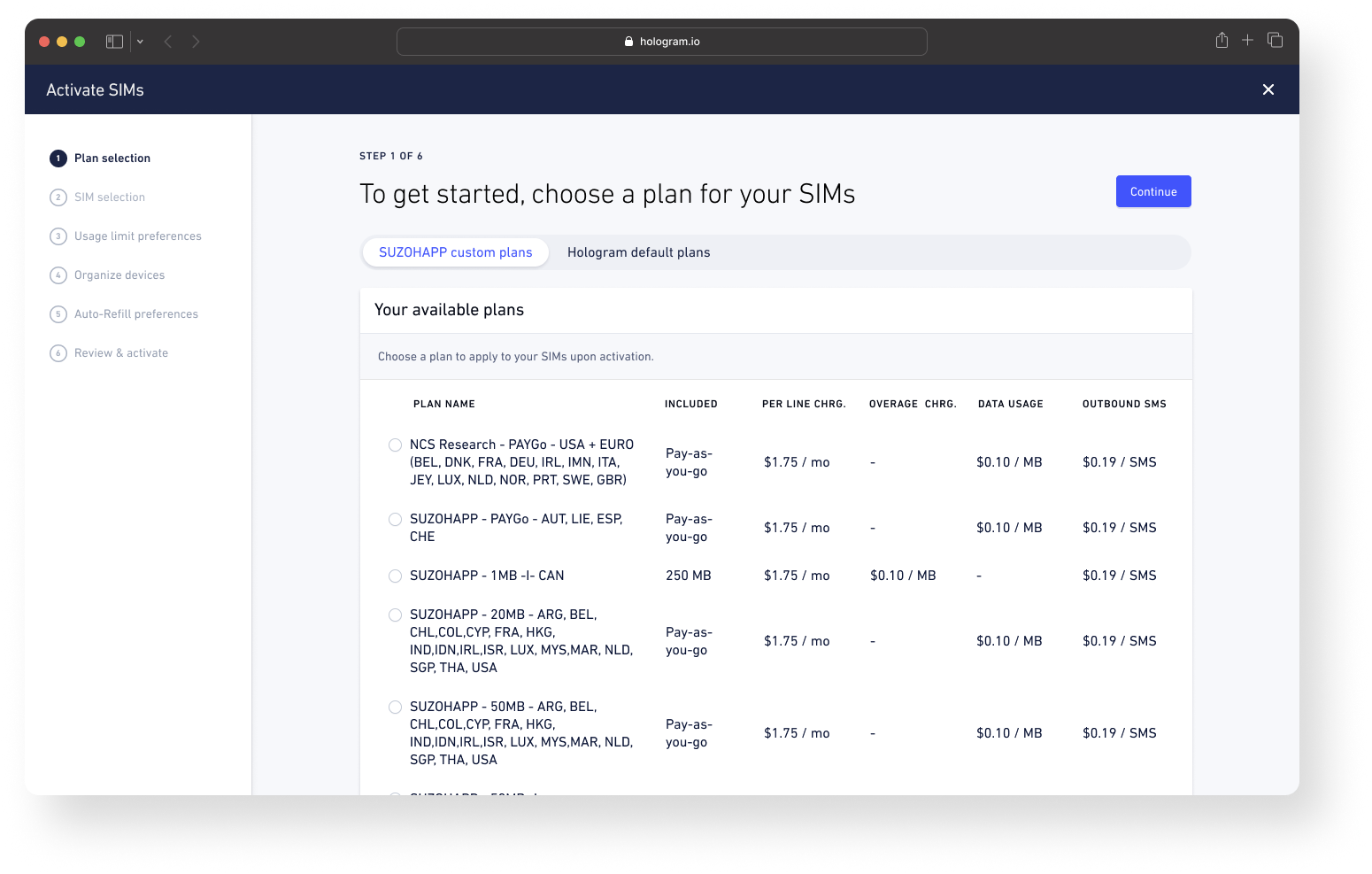Goals
Whether a self-service or contracted customer is just getting started or adding additional devices to their fleet, getting SIM cards activated is the first step — and it should be easy and fast. We wanted to help customers spend less time on set up and more time on project deployment.
Originally you could only activate your SIM cards by manually entering in each serial number on the back of each invidividual SIM or contacting our support team (that comprised of multiple back-and-forth conversations with Sales Engineers and AEs) to help with batch activations.
This flow's deficiency in distinguishing between the experiences of first-time and returning users, coupled with the absence of significant updates in over several years, highlighted the need for a thorough revisit of this feature.
1. Legacy Dashboard-First Time & Returning/Default view;2. Legacy Activation Flow-(clockwise) steps 1-3;3. Legacy Activation Flow-Review
By empowering customers through a redesigned SIM onboarding experience, customers can complete a variety of activation tasks to our network in mere minutes. Our aim was to make the activation experience seamless and user-friendly, not only to minimize the time customers spent onboarding but also to set us apart from competitors when evaluating our product.
The biggest challenge for this project was the fact that our organization planned to design and launch in tandem two distinct activation flows: one for first-time users (our Growth team) and the other for returning users (Core team) that typically activated large amounts of SIMs at once.
What we focused on
-
Redesign the activation flow within the Dashboard that also accommodates first-time users
-
Add internal/customer requested features within the activation process, including accurate pricing and clearer coverage options
-
Revise existing marketing copy within the activation process to support easy-to-understand selections and features
What we measured
-
Task completion rate for individuals commencing activation process
-
Lower customer success tickets regarding activation
